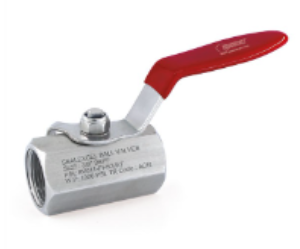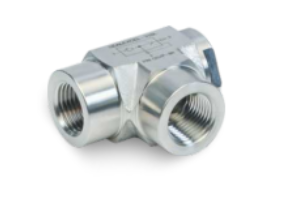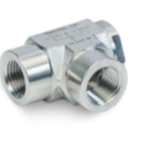
Quick Exhaust Valve for Blazing Speed: Boost Production
March 26, 2024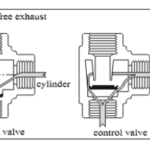
Control Valve: Quiet Superstars of Daily Life
April 26, 2024Ever peek behind the scenes of a complex machine and wonder how all those tubes and hoses manage to deliver fluids so efficiently? Often, the unsung hero behind this organized chaos is a component called a manifold valve. While they might not be the flashiest parts, manifold valves play a crucial role in controlling and directing fluid flow in various systems.
This blog dives deep into the world of manifold valves. We’ll explore their definition, delve into their different types, and shed light on why they are so important in various applications. Buckle up and get ready to Define Manifold Valves!
What Exactly is a Manifold Valve?
In its simplest form, a manifold valve is a single block of metal (or sometimes plastic) that houses multiple ports or connection points. These ports allow for the controlled flow of fluids (liquids, gasses) into or out of various channels. Imagine a traffic intersection for fluids – that’s essentially what a manifold valve does.
Here’s a breakdown of the key components of a manifold valve:
- Body: This is the main housing of the valve, typically made from durable materials like brass, stainless steel, or even high-performance plastics depending on the application.
- Ports: These are the connection points on the manifold, allowing fluids to enter or exit. The number and arrangement of ports vary depending on the valve’s function.
- Internal passages: These are channels within the manifold body that connect the different ports.
- Valves: While some manifolds may have built-in valves within the body (called integral valves), others might rely on separate valves attached to each port for individual control (called block valves).
Unveiling the Different Types of Manifold Valves
The beauty of Manifold Valve lies in their versatility. Here are some common types you’ll encounter:
- Block Manifolds: These are the simplest type, offering a basic on/off function for each port. They’re ideal for situations where you need to completely isolate specific lines.
- Metering Manifolds: These allow for precise control over the flow rate of fluids. They often have built-in features like adjustable needles or flow regulators for fine-tuning.
- Isolation Manifolds: As the name suggests, these valves excel at isolating specific sections of a fluid system. This allows for maintenance or repairs on individual components without affecting the entire system.
- Instrument Manifolds: These are specifically designed to connect instruments like pressure gauges or flow meters to multiple points within a system. They provide easy access for monitoring various fluid parameters.
- Exhaust Manifolds: These are common in internal combustion engines where they collect exhaust gasses from multiple cylinders and channel them to a single outlet, typically the catalytic converter.
Beyond these, there are specialized manifold valves designed for specific applications, like hydraulic systems or pneumatic controls. They might incorporate additional features like pressure relief valves or check valves depending on the needs of the system.
 Why Do Manifold Valves Matter?
Why Do Manifold Valves Matter?
Now that you understand the different types of manifold valves, let’s explore why they are so important:
- Improved Efficiency: By consolidating multiple connections into a single unit, manifold valves streamline fluid flow management. This reduces the number of individual pipes, hoses, and fittings needed, saving space and simplifying system design.
- Enhanced Control: Manifold valves, especially those with integrated control features, offer precise control over fluid flow. This is crucial in applications where consistent and controllable fluid delivery is essential.
- Reduced Leaks: Replacing a network of pipes and fittings with a single manifold valve minimizes potential leak points. This translates to a more reliable and leak-free system.
- Simplified Maintenance: The modular design of manifold valves makes maintenance easier. By isolating specific ports or sections, technicians can access and repair individual components without disrupting the entire system.
- Cost-Effectiveness: While the initial cost of a Manifold Valve might be higher compared to individual fittings, the long-term benefits outweigh the investment. Reduced maintenance needs, improved efficiency, and a more reliable system contribute to overall cost savings.
Applications of Manifold Valves: From Everyday Life to Complex Systems
Manifold valves play a vital role in a wide range of applications across various industries. Here are just a few examples:
- Industrial Automation: In factories and production lines, manifold valves control the flow of fluids in hydraulic systems, pneumatic systems, and coolant lines for machinery.
- HVAC Systems: Heating, ventilation, and air conditioning systems utilize manifold valves to regulate the flow of hot and cold water, as well as control air circulation in buildings.
- Automotive Industry: From intricate fuel injection systems to brake line controls, manifold valves are a crucial component in modern vehicles, ensuring proper fluid flow and system operation.
- Medical Equipment: Manifold valves play a critical role in medical equipment like dialysis machines, anesthesia delivery systems, and blood gas analyzers, ensuring precise and controlled fluid delivery.
- Food and Beverage Industry: In food processing and bottling plants, manifold valves regulate the flow of liquids like water, syrups, and even CO2 for carbonation, maintaining consistent product quality.
- Aerospace Engineering: Aircraft hydraulic systems, fuel delivery networks, and even environmental control systems all rely on manifold valves for reliable and efficient fluid management.
The list is endless, and these are only a few instances. Manifold valves are truly versatile components, contributing to the efficient operation of countless systems in our daily lives.
Selecting the Right Manifold Valve
Choosing the right manifold valve for your specific application requires careful consideration of several factors:
- Function: What do you need the valve to do? Is it for simple on/off control, precise flow metering, or isolation of specific lines?
- Pressure Rating: The valve needs to be able to withstand the maximum pressure within the system.
- Material Compatibility: The valve material should be compatible with the fluids it will be handling to avoid corrosion or degradation.
- Number of Ports: Select a valve with the appropriate number of ports to accommodate your system’s needs.
- Control Mechanism: Consider whether you need an integral valve within the manifold or individual block valves for each port.
- Size and Space Constraints: Ensure the chosen manifold valve fits comfortably within the available space in your system.
Consulting with a qualified engineer or supplier can be invaluable in selecting the ideal manifold valve for your application.
Conclusion
In conclusion, manifold valves are more than just fancy plumbing components. They are essential players in ensuring efficient, controlled, and reliable fluid flow across diverse applications. From simplifying complex systems to enhancing control and reducing leaks, the benefits of manifold valves are undeniable. The next time you encounter a network of tubes and hoses working seamlessly behind the scenes, remember – a manifold valve might be the invisible conductor orchestrating the entire fluid flow symphony.

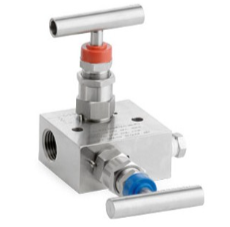
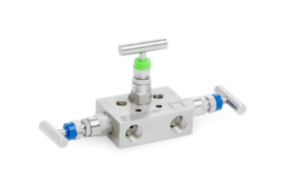 Why Do Manifold Valves Matter?
Why Do Manifold Valves Matter?